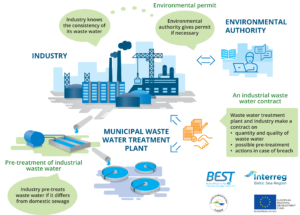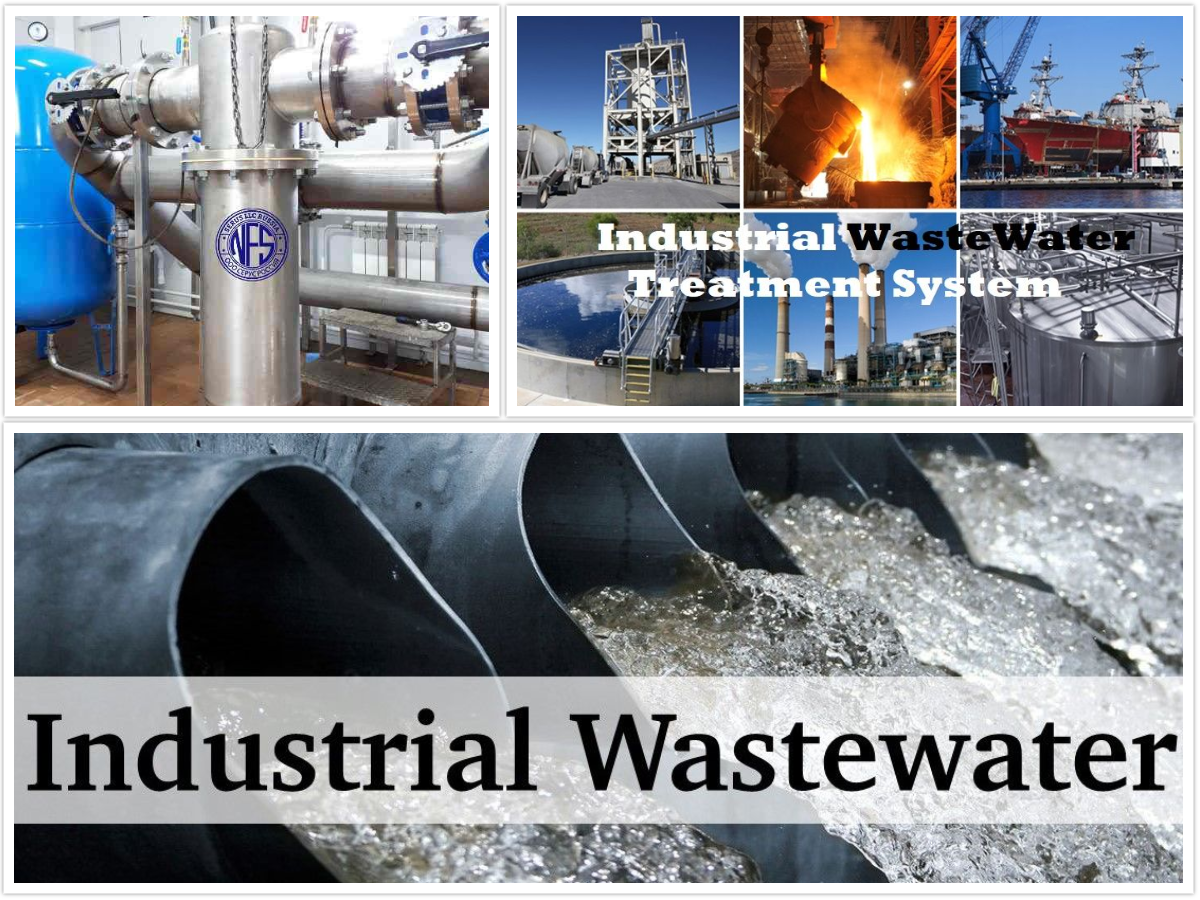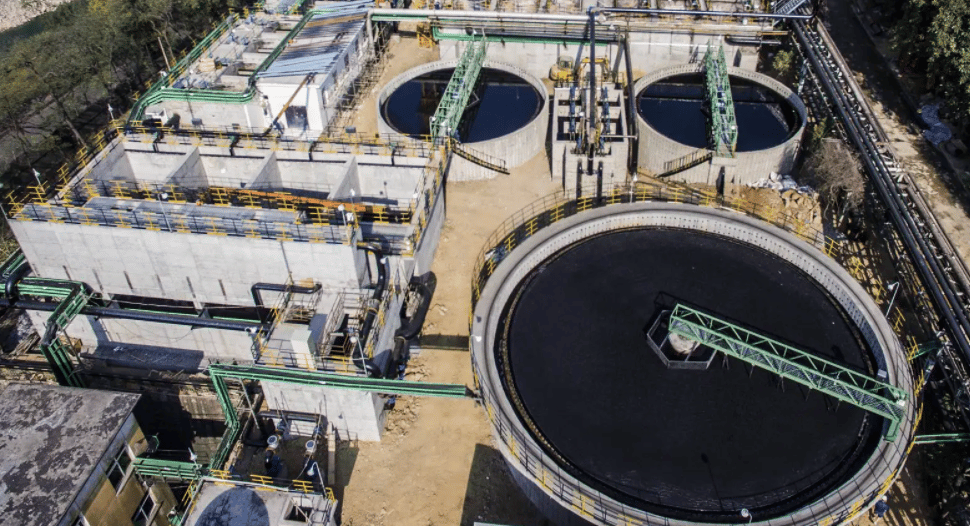Developments and Advances in Hazardous Waste Water Treatment Technologies
The landscape of commercial wastewater treatment is undertaking a transformative shift, driven by innovations that improve both effectiveness and sustainability. Arising innovations, such as membrane bioreactors and microbial fuel cells, are redefining impurity removal procedures while contributing to power generation. Furthermore, resource recovery approaches are acquiring grip, aligning with circular economic situation principles. As regulatory requirements develop, the assimilation of AI and artificial intelligence into wastewater administration systems assures to streamline operations and make certain compliance. Nevertheless, the complete effects of these developments increase critical questions regarding their scalability and lasting effect on market methods.
Summary of Waste Water Treatment Technologies
Wastewater treatment technologies incorporate a variety of approaches created to get rid of pollutants from industrial effluents prior to their launch right into the atmosphere. These technologies are crucial for maintaining eco-friendly equilibrium and making sure compliance with environmental laws. The key classifications of wastewater treatment consist of physical, chemical, and organic methods, each serving unique purposes based upon the nature of the impurities present.

Organic therapy approaches employ bacteria to break down natural matter, making them especially reliable for organic-rich effluents. Techniques like activated sludge and biofilm reactors harness the natural deterioration capacities of microorganisms, leading to significant reductions in biochemical oxygen demand (BOD)
Advanced Purification Strategies
Advanced purification techniques represent a vital development in the world of commercial wastewater therapy, improving the effectiveness of pollutant elimination procedures. Industrial Waste Water Treatment. These approaches include a variety of modern technologies, consisting of microfiltration, ultrafiltration, nanofiltration, and turn around osmosis, which supply consecutive barriers for different particle sizes and chemical structures
Microfiltration and ultrafiltration make use of membrane systems to eliminate suspended solids, microorganisms, and bigger organic molecules, improving the quality of effluent before more therapy. Nanofiltration connects the space between ultrafiltration and reverse osmosis, effectively eliminating divalent ions and natural substances, hence lowering the lots on downstream processes.
Reverse osmosis offers the highest degree of filtration by enabling only water and little particles to go through its semi-permeable membranes, making it ideal for redeeming high-grade water from commercial effluents. Recent advancements in membrane layer innovation, consisting of the growth of more resilient and fouling-resistant products, have dramatically improved functional efficiency and lowered costs.
Integrating these sophisticated purification methods not only improves the overall therapy process however also adds to sustainability efforts by allowing water reuse and source healing in commercial settings. (Industrial Waste Water Treatment)
Organic Treatment Advancements

Moreover, the advancement of crafted biological systems, such as membrane bioreactors (MBRs), incorporates organic therapy with advanced membrane layer filtering. This integration permits higher effluent top quality and decreased footprint, making it appropriate for space-constrained industrial centers. Technologies in genetically engineered microbes have actually additionally arised, enhancing the biodegradation of certain contaminants, such as pharmaceuticals and heavy metals, that are commonly challenging to get rid of.
Additionally, the execution of bioaugmentation methods, where advantageous germs are introduced to improve the existing organic treatment procedures, has shown encouraging cause enhancing treatment efficiency. These innovations collectively indicate a trend in the direction of even more sustainable and effective biological therapy techniques that can adjust to the advancing complexities of industrial wastewater streams. As markets proceed to prioritize environmental compliance, these organic technologies will play an important duty in wastewater monitoring.

Resource Recovery Approaches
In industrial setups, the combination of source healing methods has actually ended up being significantly crucial for enhancing sustainability and lessening waste. These methods focus on extracting valuable products and power from wastewater streams, thereby transforming potential toxins into multiple-use resources.
One famous approach is vitamins and mineral recovery, where nitrogen and phosphorus, usually present over in wastewater, are captured and transformed into fertilizers. This not just minimizes ecological impacts yet also supplies a round economy option for farming applications. Additionally, modern technologies such as anaerobic digestion enable for the conversion of natural waste right into biogas, an eco-friendly energy source that can counter nonrenewable fuel source use in commercial procedures.
Furthermore, advanced purification and membrane layer technologies assist in the recuperation of commercial byproducts such as salts and metals. These recuperated products can be rehabilitated right into manufacturing processes, decreasing the requirement for virgin sources.
Future Fads in Drainage Monitoring
As industries increasingly focus on sustainability, the future of wastewater monitoring is readied to undergo significant changes. Technological improvements, such as expert system and equipment understanding, will certainly make it possible for more efficient monitoring and management of wastewater systems. These technologies can predict maintenance needs, optimize therapy procedures, and boost decision-making, inevitably minimizing functional expenses and environmental impact.
Furthermore, the integration of circular economic situation concepts will certainly play a critical duty in wastewater monitoring. Industries are expected to shift towards systems that not just deal with wastewater however also recoup beneficial sources, such as nutrients, water, and energy. This transition will certainly lessen waste official statement and advertise the reuse of materials, straightening with international sustainability goals.
Emerging therapy methods, such as membrane bioreactors and progressed oxidation procedures, will better improve the efficiency of wastewater treatment, enabling higher top quality effluents suitable for reuse. In addition, regulative frameworks are most likely read the full info here to develop, emphasizing more stringent standards for wastewater discharge and encouraging sectors to adopt cutting-edge treatment remedies.
Final Thought
In conclusion, the development of commercial wastewater therapy modern technologies demonstrates a considerable change in the direction of enhanced efficiency and sustainability (Industrial Waste Water Treatment). Advancements in innovative purification techniques, biological treatments, and resource healing techniques highlight the sector's dedication to ecological stewardship.
The landscape of commercial wastewater treatment is going through a transformative change, driven by advancements that boost both performance and sustainability.Wastewater therapy modern technologies incorporate a range of methods designed to remove contaminants from industrial effluents before their launch right into the environment.Utilizing the power of biological processes has led to substantial technologies in the therapy of commercial wastewater.Furthermore, the implementation of bioaugmentation strategies, where valuable germs are introduced to enhance the existing biological therapy procedures, has actually shown encouraging outcomes in improving therapy efficiency. These technologies jointly symbolize a pattern towards more effective and sustainable organic treatment approaches that can adapt to the advancing intricacies of industrial wastewater streams.
Comments on “Industrial Waste Water Treatment-- Boost Performance with Custom Water Treatment Systems”